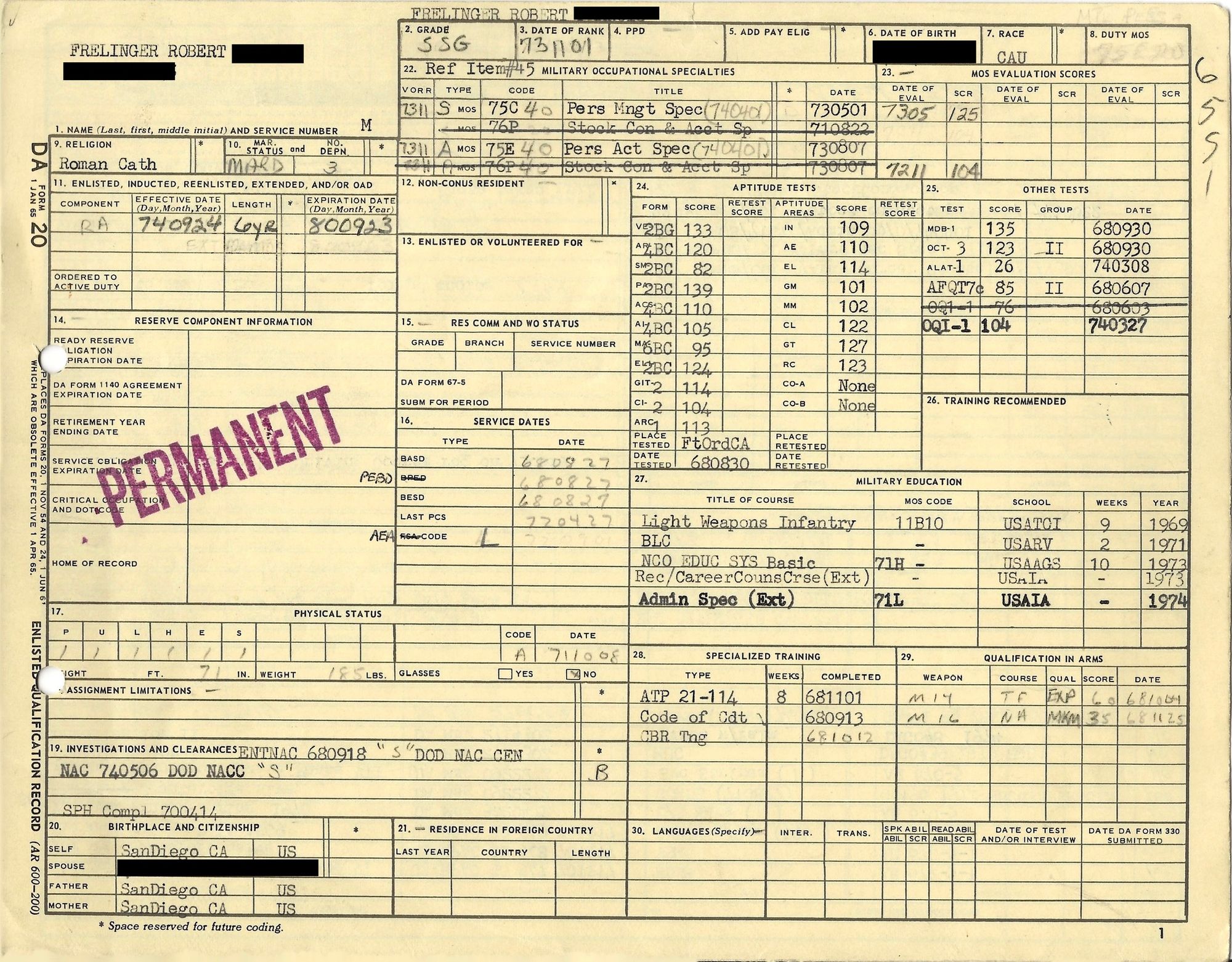By MAJ (Ret) Bob Frelinger
The recent AGCRA blog post describing the launch of the The Integrated Personnel and Pay System – Army (IPPS – A) (Army's New HR Platform) brings back lots of memories of another US Army HR system launch.
The year was 1973. The place was the US Army Personnel Center, Oakland Army Base, CA. In those days, for example, to produce a printed Personnel Information Report (PIR), we maintained a deck of keypunched cards. The deck contained a card for each element of the organizational structure and a card for each person in the organization. The order of the cards mattered. When we wanted an updated PIR, we updated the card deck, then put the deck in the hands of the magic computer people. The next day we had our report printed on green bar 14 7/8” x 11” computer paper. Seems primitive today, but it beat typing it out.

For the most part, everything was dependent on typewritten paper documents... and don't forget the carbon paper if multiple copies were needed. The documents and data pertaining to each Soldier were kept in the all-important Military Personnel Records Jacket (MPRJ). The DA Form 20, Enlisted Qualification Record followed by the DA Form 2-1 was the summation of the Soldier's qualifications, training, awards, and assignment history. And there was even a specific MOS, 75D, for the Soldiers tasked with keeping the MPRJ and qualification record up-to-date. If data was needed on a Soldier or we needed to screen for a certain qualification, it had to be done by consulting each record one by one.

But times they were a-changin'!! Just as today's technological advances have brought us IPPS – A, technological advances of the late 1960s and early 1970s brought us a new personnel system known as SIDPERS (Standard Installation/Division Personnel System). The data migration strategy then was very different than today's automated migrations. We were moving from a paper system to an automated one. The data from each Soldier's record had to be painstakingly transferred to a form from which data entry clerks back in the magic computer room could enter the data into the system. To this day, I cannot write a zero without putting a slash through it, nor can I write the number one without putting a horizontal line at the bottom of it.
Corrections and or updates were handled similarly... individual transactions following prescribed formats were entered by hand onto the data entry form and submitted to the magic computer people. I remember this particularly well because one of my fellow personnel clerks thought it would be funny to code my gender as female though I am not. It perhaps would have been funnier if it had not taken three or four tries to get the correction into the system.
Now let's fast forward about 13 years to 1986. I had successfully completed OCS and was serving as the Personnel Management Officer in the 4th Personnel Services Company, 4th Infantry Divison at Fort Carson, CO. Promotions and pay go hand in hand, but we saw many instances of the disconnects. We had many discussions about how the personnel and pay systems should be able to support or talk to each other technologically. One roadblock, among many, we saw was the ownership of a piece of shared data. Who would own, or be the ultimate arbiter, of any given data element? My fellow personnel and finance officers saw an integration of the systems as being doable and actually necessary. We didn't know when it would happen. But we knew, although it would be really, really hard and complicated, it would happen.
What we didn't foresee was the power of the internet. After I left the Army I was privileged to work for Sun Microsystems and Oracle Corporation. The HR self-service capabilities that I witnessed in those companies from 2000 to 2012 were amazing to me. After all, I believe the individual is the person ultimately responsible for the accuracy of the data in their record, and those systems empowered the individual. But a huge issue at those companies, which is also huge for the users of IPPS – A, is getting people comfortable with, and patient enough to want to go to the Knowledge Base before they ask a question that has already been asked and answered. It is a tough nut to crack because the logic of the user frequently does not match the logic of the people organizing the information in the Knowledge Base. And search engines rely on clear and specific search terms that the user may not be able to figure out.
This old retired AG Corps Soldier is thrilled to see this new system roll-out. It is clear that it will provide greater speed and visibility to the support for our Soldiers and our leaders as well, giving them more time to prepare for their next mission, whatever that may be.
Shields Up! Defend and Serve!
